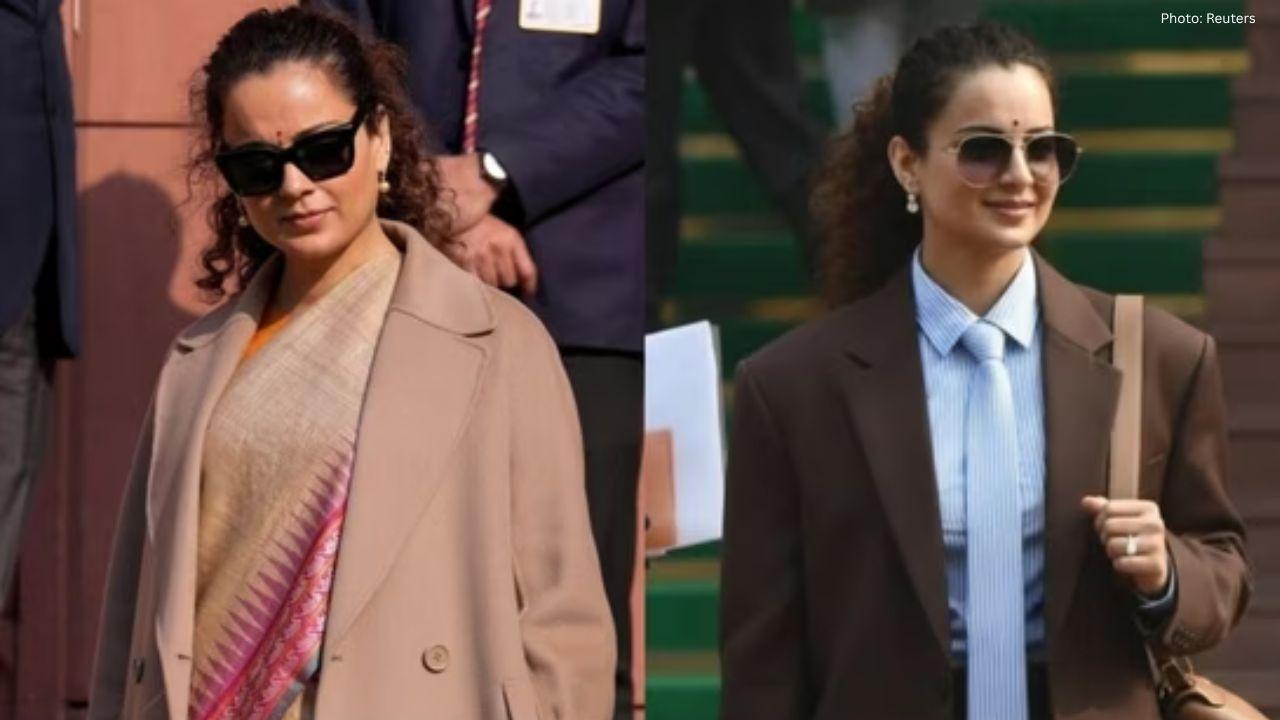You have not yet added any article to your bookmarks!

Join 10k+ people to get notified about new posts, news and tips.
Do not worry we don't spam!

Post by : Anis Farhan
The aviation industry has always been a symbol of progress, speed, and innovation. Yet, for decades, it has also carried the burden of being one of the most polluting forms of transportation. With increasing concerns about climate change and mounting regulatory pressures to reduce carbon emissions, aviation is at a turning point. The rise of electric planes, or e-planes, is no longer a far-off dream—it is quickly becoming a reality. Engineers, investors, and airlines are racing to explore whether electric flight can truly revolutionize how we travel, potentially leading to cleaner skies and quieter airports.
Electric aircraft are powered by batteries or hybrid propulsion systems instead of traditional jet fuel. Much like electric cars, they use electric motors that generate far less noise and emissions. However, scaling this technology to aviation comes with unique challenges.
Battery energy density remains a major hurdle. While a car can rely on heavy lithium-ion packs, airplanes cannot afford such weight due to the strict relationship between mass, lift, and fuel efficiency. Current batteries store far less energy per kilogram compared to aviation fuel. To achieve long-haul electric flights, researchers are experimenting with solid-state batteries, hydrogen fuel cells, and hybrid models that combine electric power with traditional engines.
Despite these challenges, short-haul electric flights are already proving feasible. Small aircraft designed for regional travel or pilot training are being tested successfully, showing that electric aviation may first take hold in niche markets before scaling up to larger commercial jets.
One of the strongest arguments in favor of e-planes is their potential to dramatically reduce emissions. Aviation accounts for about 2.5% of global carbon dioxide emissions, and this share is expected to rise as more people fly. Electric propulsion, if powered by renewable energy sources, could virtually eliminate emissions for short-haul flights.
Additionally, electric motors generate far less noise than traditional jet engines. This could transform airports that are currently restricted by noise pollution, allowing for more flights at night or in urban regions where residents have long opposed expansions. For communities near airports, the shift to quieter electric planes would be a welcome change.
For airlines, the appeal of electric aviation lies not just in sustainability but also in cost. Jet fuel is one of the largest expenses for carriers, often accounting for up to 30% of operational costs. Electric planes, which rely on electricity instead of fuel, could significantly cut costs in the long run.
Maintenance costs could also decline. Electric motors have fewer moving parts compared to combustion engines, which means fewer mechanical failures and less downtime. For budget airlines operating tight schedules, this could be a game changer.
However, the initial investment is steep. Aircraft manufacturers must develop new models from scratch, and airports will require new infrastructure for charging stations and maintenance. Airlines must weigh the long-term benefits against the short-term costs, which is why many are still cautious about large-scale adoption.
The push for electric flight is not limited to one region—it is a global race.
Europe has been a leader in pushing e-plane innovation, with companies like Airbus investing heavily in hybrid-electric projects. Norway has even announced an ambitious target to make all domestic flights electric by 2040.
The United States is also moving rapidly, with startups like Joby Aviation and Beta Technologies focusing on electric vertical take-off and landing (eVTOL) aircraft. These flying taxis may not replace long-haul jets but could transform urban mobility.
Asia, with its booming travel market, is also eyeing e-planes. China has invested heavily in battery technology and may soon emerge as a key player in electric aviation. Japan and South Korea, with their strong technology sectors, are also entering the competition.
The Middle East, known for its mega airports and luxury carriers, has begun studying the feasibility of electric and hydrogen-powered planes as part of its broader sustainability commitments.
While the promise of electric aviation is strong, several barriers remain.
Battery Technology – Current lithium-ion batteries simply cannot store enough energy for long-haul international flights. Until new energy solutions emerge, electric planes will likely remain confined to short distances.
Infrastructure – Airports worldwide must adapt to the needs of electric aircraft. This includes charging stations, maintenance facilities, and retraining staff. The cost of overhauling infrastructure will be enormous.
Regulation – Aviation is one of the most heavily regulated industries. Certifying electric aircraft for commercial use will take time, with strict safety testing required before passengers can board.
Consumer Trust – Just as electric cars once faced skepticism, e-planes may need time to gain widespread acceptance. Passengers will need assurance that electric planes are as safe, reliable, and comfortable as traditional jets.
Most experts believe that electric planes will first dominate the regional flight sector. Distances under 500 kilometers are ideal for battery-powered aircraft, particularly for countries with dense populations and high domestic travel demand.
Imagine a future where passengers can fly from Dubai to Muscat, Singapore to Kuala Lumpur, or Los Angeles to San Francisco entirely on electric planes. These short routes could cut both emissions and travel costs, while also serving as test cases before long-haul adoption.
Until fully electric long-haul aircraft are possible, hybrid models may bridge the gap. Much like hybrid cars, these planes combine traditional engines with electric motors, reducing fuel consumption while maintaining range. Airbus, Boeing, and several startups are exploring this route as a practical solution for the next two decades.
Hybrid e-planes could allow airlines to lower their carbon footprint gradually without waiting for breakthrough battery technology.
Another fascinating application of electric aviation lies in urban air mobility. Electric vertical take-off and landing (eVTOL) aircraft, often described as flying taxis, could completely change how people commute in cities. These vehicles are being tested in the U.S., Europe, and Asia, with Dubai among the first cities planning to integrate air taxis into its transport network.
If successful, these flying vehicles could ease traffic congestion, cut commuting times, and bring futuristic cityscapes to life.
The big question remains: can electric planes replace traditional jet aircraft in the foreseeable future? The answer, for now, is no—at least not for long-haul international flights. Technology is simply not advanced enough to handle transcontinental journeys with hundreds of passengers.
However, the potential of e-planes in regional flights, private aviation, and urban air mobility is undeniable. With governments pushing for sustainability and airlines looking for cost savings, electric aviation is likely to expand steadily over the next 20 years.
By mid-century, it is possible that most short-haul flights could be electric, while long-haul journeys may rely on hybrid or hydrogen-powered models.
As with all new technologies, public perception will play a key role. Early adopters may be eager to try electric flights, especially if airlines market them as eco-friendly and futuristic. However, convincing mass travelers will require safety guarantees, competitive ticket prices, and reliable performance.
The aviation industry is now at a crossroads. Just as jet engines once replaced propellers and transformed aviation in the 20th century, electric propulsion could become the defining innovation of the 21st century. The road will not be easy, but the momentum is undeniable.
Electric flight represents more than just a technological upgrade—it symbolizes a broader shift toward sustainable living and responsible travel. From regional air routes to futuristic air taxis, e-planes could reshape not only aviation but also the way cities and countries connect with one another.
The next two decades will be crucial in determining how quickly this transition happens. With innovation accelerating, electric planes may not fully replace jets anytime soon, but they are poised to become a vital part of aviation’s future. The skies of tomorrow may very well be quieter, greener, and powered by electricity.
This article is a general analysis of electric aviation trends. It is intended for informational purposes only and does not represent investment, business, or regulatory advice. Readers are encouraged to follow industry updates for the latest developments.










Two Telangana Women Die in California Road Accident, Families Seek Help
Two Telangana women pursuing Master's in the US died in a tragic California crash. Families urge gov

Ranveer Singh’s Dhurandhar Roars Past ₹1100 Cr Worldwide
Ranveer Singh’s Dhurandhar stays unstoppable in week four, crossing ₹1100 crore globally and overtak

Asian Stocks Surge as Dollar Dips, Silver Hits $80 Amid Rate Cut Hopes
Asian markets rally to six-week highs while silver breaks $80, driven by Federal Reserve rate cut ex

Balendra Shah Joins Rastriya Swatantra Party Ahead of Nepal Polls
Kathmandu Mayor Balendra Shah allies with Rastriya Swatantra Party, led by Rabi Lamichhane, to chall

Australia launches review of law enforcement after Bondi shooting
Australia begins an independent review of law enforcement actions and laws after the Bondi mass shoo

Akshaye Khanna exits Drishyam 3; Jaideep Ahlawat steps in fast
Producer confirms Jaideep Ahlawat replaces Akshaye Khanna in Drishyam 3 after actor’s sudden exit ov